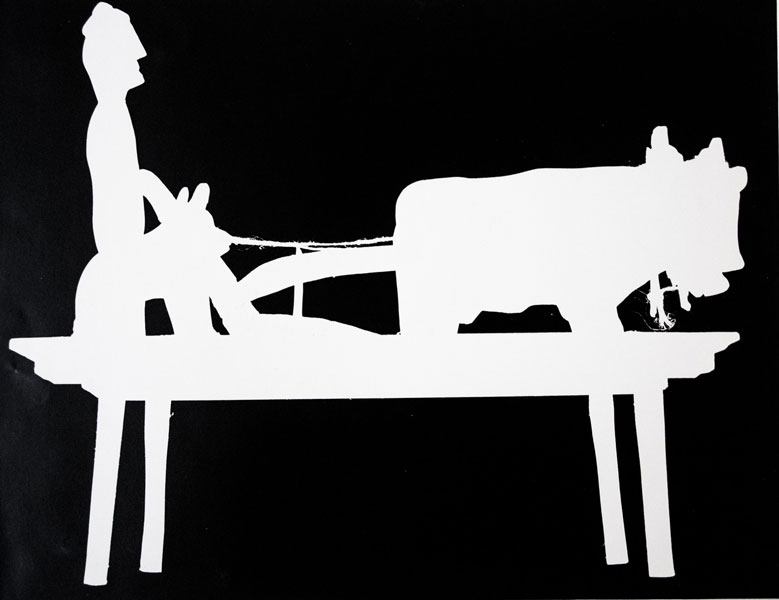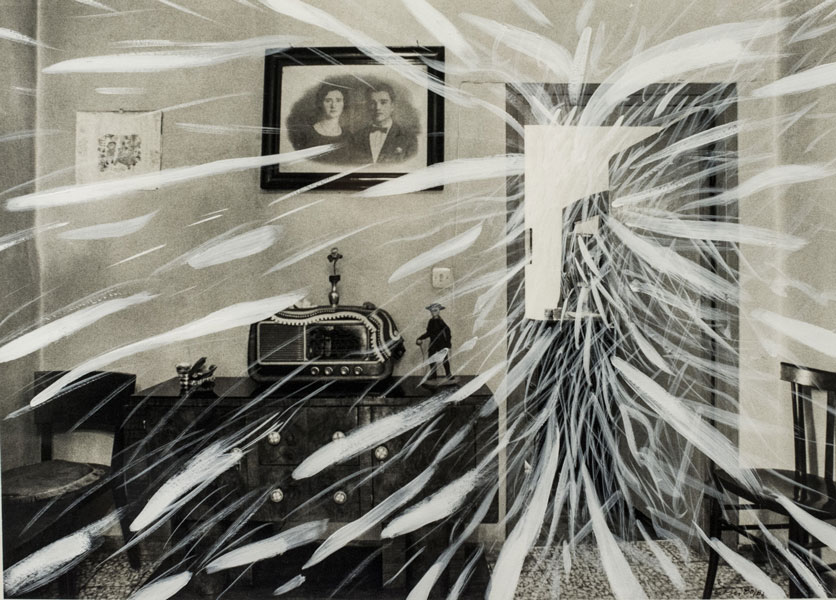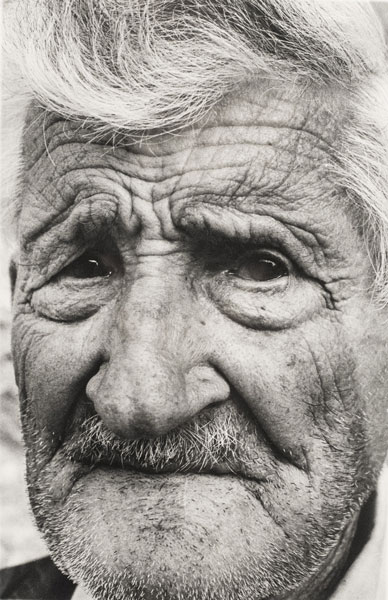Mario Cresci (1942-)



Mario Cresci (Chiavari, 1942)
A unique artist and photographer, was one of the first of his generation to apply and unite the culture of projects with experimentation in visual languages.
His complex work became rooted in multidisciplinary studies starting in 1964, the year he started to attend the upper-level course in Industrial Design in Venice. In 1968 he moved to Rome, where he came into contact with Pascali, Mattiacci and Kounellis. He photographed Boetti and Turin’s Arte Povera group during the set-up of the exhibition entitled “Il percorso”, curated by Mara Coccia at the Studio Arco d’Alibert. In 1969, at the Galleria Il Diaframma in Milan, he designed and staged the first photographic “Environnement” in Europe, in the name of the dualism between wealth and poverty.
He won the Niépce Prize for Italy in 1967 and took part in the Venice Biennale a number of times (1970, 1978, 1993, 1995); since 1974, some of his photographs, along with those of Luigi Ghirri, have been part of the MoMA collection in New York.
Starting in the Seventies, he blended the study of photographic language with the project concept, showing an interest in cultural anthropology, and in Basilicata he executed projects that were central for the development of photography in Italy, among which the book “Matera, immagini e documenti”, published in 1975.
Cresci is the author of multiform works characterized by freedom of research through drawing, photography, the video experience and installation. Cresci developed various themes and types of experimentation in his works over the years: from shifts in meaning to variations, analogies, and the relationship with the landscape and places of art, such as the site-specific works pertaining to his research in recent years, stemming from an organic comparison with certain places and their unique historical, cultural and aesthetic aspects. In fact, for Cresci photography is never an end to itself, singular and self-sufficient, but is always part of a story in images that can bring together knowledge and beauty, field research and visual emotion.
The experimental project of the workshop-artistic training school with art, multimedia and design, conceived for the Region of Basilicata, brought him closer and closer to teaching, which, starting in the late Seventies, became an integral part of his work as an artist.
He directed the Accademia di Belle Arti G. Carrara from 1991 until 1999, and his interdisciplinary programming included numerous cultural activities dedicated to young artists, such as “Arte & Impresa”, “Clorofilla” and “Accademie in Europa”, in collaboration with GAMeC in Bergamo. Cresci taught at the Politecnico di Milano, the University of Naples – L’Orientale, the Department of Humanities in Parma, the IED and NABA in Milan. Between 2004 and 2011 he also taught the two-year specialization programme in photography at the Accademia di Brera in Milan and at the Fondazione Fotografia in Modena.. Currently, he teaches at ISIA University in Urbino. For a number of years he was visiting professor at the École d’Arts Appliqués in Vevey (Switzerland).
The re-establishment of the sense of landscape and construction of the photographic image made him one of the key artists in the “Viaggio in Italia” exhibition that Luigi Ghirri organized at the Pinacoteca Provinciale in Bari in 1984.
His most important exhibitions include the anthological exhibition “Le case della Fotografia, 1966–2003” at the Galleria Civica d’Arte Moderna e Contemporanea in Turin (2004); the travelling project entitled “Forse Fotografia” at the Pinacoteca Nazionale in Bologna, the Istituto Nazionale per la Grafica in Rome and the Palazzo Lanfranchi in Matera (2010–12); “Ex-post. Orizzonti momentanei” at the Museo d’Arte in Gallarate (2014); the two shows “In aliam figuram mutare” at the Castello Sforzesco in Milan and “Mario Cresci. Ri-Creazioni” at Camera in Turin (2016) and “The Photography of No” at the Galleria d’Arte Moderna e Contemporanea in Bergamo (2017), where he displays fifty years of work by orienting the exhibition’s itinerary on the reading of some of the main themes that unite most of his projects. The year 2023 finds Cresci engaged in a new reading of his work through specific focuses recounted in two extensive exhibitions: “The Exorcism of Time, 1970-1980” at MAXXI in Rome (Contrastobook catalogue) and “Colorland”, 1975-1983 at the Monastery of Astino for the MIA Foundation in Bergamo (Electa catalogue).
He has published numerous essays and articles, particularly for the culture insert of the newspaper “Il Sole 24 Ore.” His production of books and more generally of contributions, including theoretical ones, on photography and visual communication is extensive and articulate. In 2019 he published “Migrating Signs. Stories of graphics and photography”, a compendium of his research and “Prix Livre Histororique” at Les Rencontres de la Photographie 2020 in Arles.
Recently for Mimesis Editions he published “Matrici. L’incertezza del vero”, where he experiments with the coexistence of writing and image: 80 doodles re-drawing photographs made from the late 1960s to the present. He lives and works in Bergamo.
Mario Cresci (Chiavari, 1942)
Artista e fotografo unico nel suo genere, è stato uno dei primi della sua generazione ad applicare e unire la cultura del progetto con la sperimentazione nei linguaggi visivi.
Il suo lavoro complesso si è radicato in studi multidisciplinari a partire dal 1964, anno in cui iniziò a frequentare il corso superiore di Design Industriale a Venezia. Nel 1968 si trasferì a Roma, dove entrò in contatto con Pascali, Mattiacci e Kounellis. Fotografò Boetti e il gruppo dell’Arte Povera di Torino durante l’allestimento della mostra intitolata Il percorso, curata da Mara Coccia allo Studio Arco d’Alibert. Nel 1969, presso la Galleria Il Diaframma di Milano, progettò e mise in scena il primo “Environnement” fotografico in Europa, nel segno del dualismo tra ricchezza e povertà.
Vinse il Premio Niépce per l’Italia nel 1967 e partecipò più volte alla Biennale di Venezia (1970, 1978, 1993, 1995); dal 1974 alcune sue fotografie, insieme a quelle di Luigi Ghirri, fanno parte della collezione del MoMA di New York.
A partire dagli anni Settanta ha fuso lo studio del linguaggio fotografico con il concetto di progetto, mostrando interesse per l’antropologia culturale, e in Basilicata realizzò progetti fondamentali per lo sviluppo della fotografia in Italia, tra cui il libro Matera, immagini e documenti, pubblicato nel 1975.
Cresci è autore di opere multiformi caratterizzate dalla libertà di ricerca attraverso disegno, fotografia, video e installazione. Nel corso degli anni ha sviluppato vari temi e tipi di sperimentazione: dai cambiamenti di significato alle variazioni, analogie e al rapporto con il paesaggio e i luoghi dell’arte, come le opere site-specific legate alla sua ricerca recente, nate da un confronto organico con determinati luoghi e i loro unici aspetti storici, culturali ed estetici. Per Cresci, la fotografia non è mai fine a se stessa, singolare e autosufficiente, ma fa sempre parte di una narrazione per immagini che unisce conoscenza e bellezza, ricerca sul campo ed emozione visiva.
Il progetto sperimentale della scuola-laboratorio artistica con arte, multimedia e design, concepito per la Regione Basilicata, lo avvicinò sempre più all’insegnamento, che a partire dalla fine degli anni Settanta divenne parte integrante del suo lavoro di artista.
Dal 1991 al 1999 diresse l’Accademia di Belle Arti G. Carrara, e la sua programmazione interdisciplinare incluse numerose attività culturali dedicate ai giovani artisti, come “Arte & Impresa”, “Clorofilla” e “Accademie in Europa”, in collaborazione con la GAMeC di Bergamo.
Ha insegnato al Politecnico di Milano, all’Università di Napoli – L’Orientale, al Dipartimento di Lettere di Parma, all’IED e alla NABA di Milano. Tra il 2004 e il 2011 ha inoltre insegnato il biennio specialistico in fotografia all’Accademia di Brera di Milano e alla Fondazione Fotografia di Modena. Attualmente insegna all’ISIA di Urbino. Per diversi anni è stato professore ospite all’École d’Arts Appliqués di Vevey (Svizzera).
Il recupero del senso del paesaggio e la costruzione dell’immagine fotografica lo resero uno degli artisti chiave della mostra Viaggio in Italia organizzata da Luigi Ghirri alla Pinacoteca Provinciale di Bari nel 1984.
Le sue mostre più importanti includono l’antologica Le case della Fotografia, 1966–2003 alla Galleria Civica d’Arte Moderna e Contemporanea di Torino (2004); il progetto itinerante Forse Fotografia presso la Pinacoteca Nazionale di Bologna, l’Istituto Nazionale per la Grafica di Roma e il Palazzo Lanfranchi di Matera (2010–12); Ex-post. Orizzonti momentanei al Museo d’Arte di Gallarate (2014); le due mostre In aliam figuram mutare al Castello Sforzesco di Milano e Mario Cresci. Ri-Creazioni a Camera Torino (2016) e The Photography of No alla Galleria d’Arte Moderna e Contemporanea di Bergamo (2017), dove ha esposto cinquant’anni di lavoro orientando il percorso espositivo sulla lettura di alcuni dei principali temi che uniscono la maggior parte dei suoi progetti.
Il 2023 lo vede impegnato in una nuova lettura della sua opera attraverso due ampie mostre: The Exorcism of Time, 1970-1980 al MAXXI di Roma (catalogo Contrastobook) e Colorland, 1975-1983 al Monastero di Astino per la Fondazione MIA di Bergamo (catalogo Electa).
Ha pubblicato numerosi saggi e articoli, in particolare per l’inserto culturale del quotidiano Il Sole 24 Ore. La sua produzione di libri e contributi, anche teorici, sulla fotografia e comunicazione visiva è ampia e articolata. Nel 2019 ha pubblicato Migrating Signs. Storie di grafica e fotografia, un compendio della sua ricerca che ha ricevuto il Prix Livre Histororique a Les Rencontres de la Photographie 2020 ad Arles.
Recentemente per Mimesis Edizioni ha pubblicato Matrici. L’incertezza del vero, in cui sperimenta la coesistenza di scrittura e immagine: 80 scarabocchi che ridisegnano fotografie realizzate dalla fine degli anni ’60 a oggi. Vive e lavora a Bergamo.
